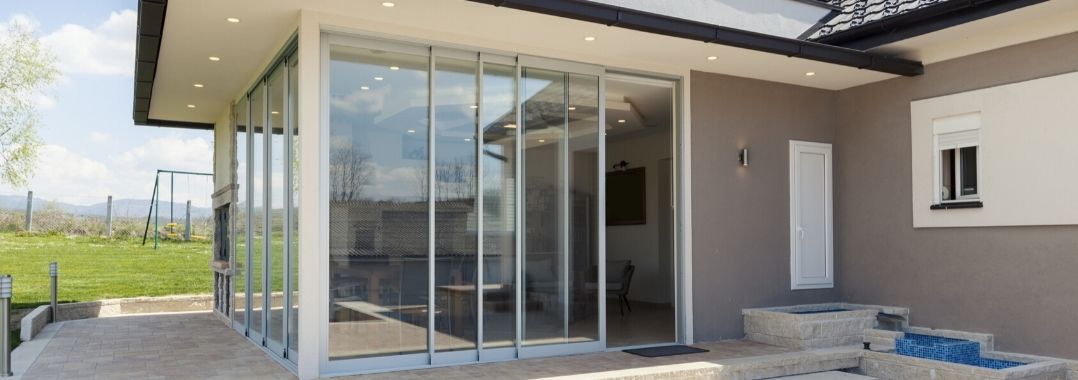When it comes to home design, doors are more than just functional features; they play a significant role in energy efficiency, aesthetics, and the overall comfort of your living space. Among the many door options available, sliding doors, folding doors, and casement doors are some of the most popular choices. However, if energy efficiency is your priority, it’s essential to know how each type of door stacks up. In this blog, we’ll dive into the specifics of sliding doors and how they can be an energy-efficient solution for your home.
Understanding Energy Efficiency in Doors
Before we explore aluminum sliding doors and their counterparts, let’s quickly understand what makes a door energy efficient. Key factors include:
Thermal Insulation: The ability of the door to minimize heat transfer between the interior and exterior of your home.
Material Composition: High-quality materials like uPVC, aluminum, or wood combined with modern glazing can improve insulation.
Sealing: Proper sealing prevents air leakage, which impacts energy bills.
Glass Options: Double or triple-glazed glass can significantly enhance insulation and reduce heat loss.
Sliding Doors: A Perfect Blend of Aesthetics and Efficiency
What are Sliding Doors?
Sliding doors are composed of large glass panels that glide horizontally along a track. These doors offer a sleek, modern look while allowing for expansive views of your outdoor space.
Energy Efficiency Benefits of Sliding Doors
- Large Glass Panels with Modern Glazing:
Sliding doors typically feature floor-to-ceiling glass panels, which can either be a strength or a weakness in terms of energy efficiency. When fitted with double or triple-glazed glass, they excel at keeping your home insulated by reducing heat transfer. Low-E (low emissivity) glass can further improve thermal performance by reflecting heat back into the room during winter and reducing heat gain in summer.
- Tight Seals for Reduced Air Leakage:
High-quality sliding doors are designed to fit snugly within their frame, giving them an advantage over traditional doors when it comes to air sealing. Investing in sliding doors with weatherstripping or insulated frames can further prevent drafts, helping your HVAC system maintain a consistent temperature.
- Space-Saving Design:
Unlike folding or casement doors, sliding doors move horizontally without swinging inward or outward. This design not only saves space but also creates a seamless barrier between the indoors and outdoors. Their energy-efficient design ensures that you’re not losing significant heat or cool air in areas with limited square footage.
- Improved Natural Lighting:
Sliding doors allow ample natural light to flood your home, which reduces your need for artificial lighting during the day. By minimizing dependency on electricity, you can save energy while enjoying a brighter living space.
Choosing Energy-Efficient Sliding Doors:
To make the most of sliding doors, keep the following tips in mind:
- Opt for double-glazing or triple-glazing with gas fills (like argon gas) for better insulation.
- Look for frames made of materials such as thermally broken aluminum, which offer excellent thermal insulation.
- Install sliding doors with advanced weather seals to reduce drafts and prevent energy loss.
- Choose Low-E glass for better temperature control and UV protection.
How Do Folding Doors and Casement Doors Compare?
Folding Doors:
Aluminum folding doors (or bi-fold doors) consist of multiple panels that fold back on themselves to create a wide opening. They are great for modern designs and connecting indoor and outdoor spaces. While folding doors can also feature the same energy-efficient glazing and materials as sliding doors, they tend to have more joints and gaps, which can be potential weak spots for air leakage. Proper weather-sealing and insulated frames are essential to maximize energy efficiency.
Casement Doors:
Aluminum casement doors operate by swinging open, similar to traditional windows. They often feature tight seals and offer excellent energy performance due to their straightforward design. However, their swinging motion requires more space, making them less ideal for areas with limited room. Casement doors are suitable for small, enclosed spaces where air sealing is a top priority, but they lack the sleek, expansive views offered by sliding or folding options.
Why Sliding Doors Are an Energy-Efficient Winner
Sliding doors strike a perfect balance between energy efficiency, functionality, and aesthetics. Their large, glazed panels create a modern, open look while maintaining insulation through double or triple-glazing. The space-saving design and customization options with advanced materials make sliding doors a reliable choice for homeowners looking to reduce energy consumption.
Whether you’re upgrading your patio entrance or designing a new home, energy-efficient sliding doors are a smart investment for a sustainable future.
When choosing between folding, sliding, or casement doors, it’s vital to consider your home layout, energy goals, and design preferences. Sliding doors stand out for their combination of style, functionality, and energy savings. With the right materials and features, they can make your living space beautiful, comfortable, and cost-efficient all year long.




